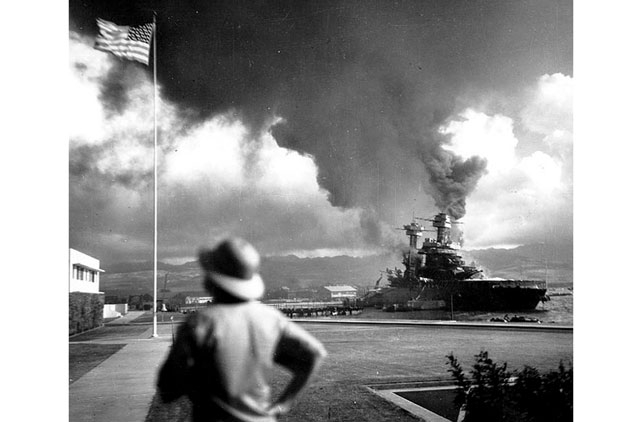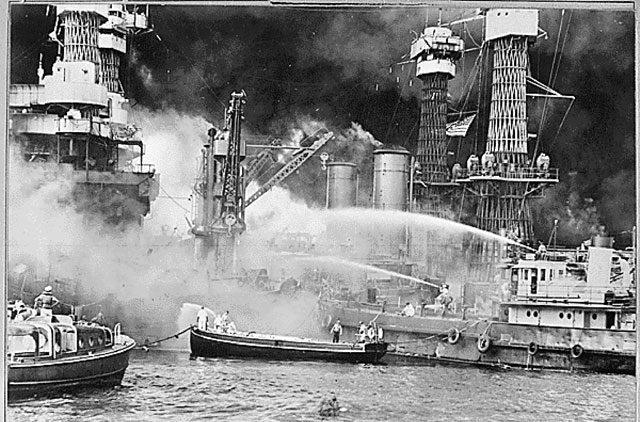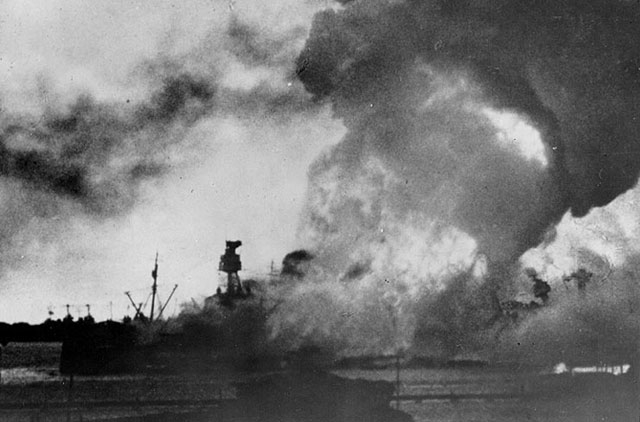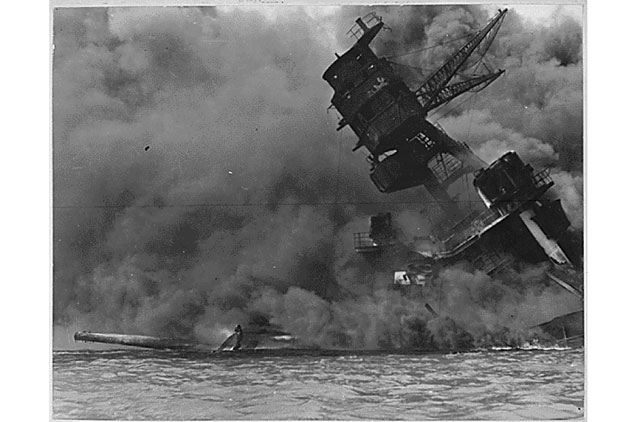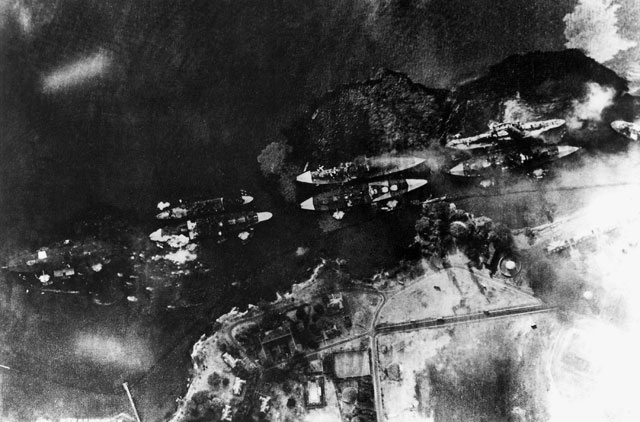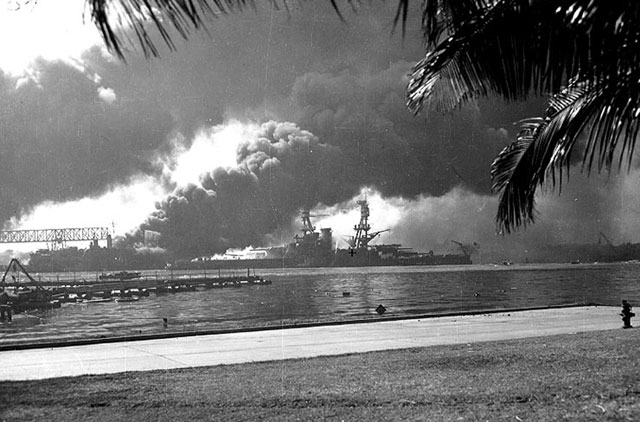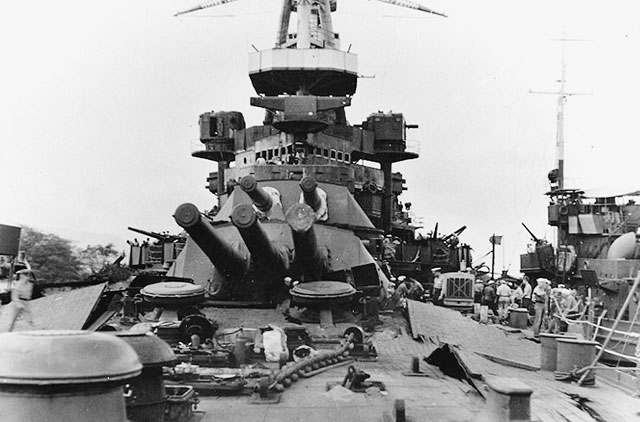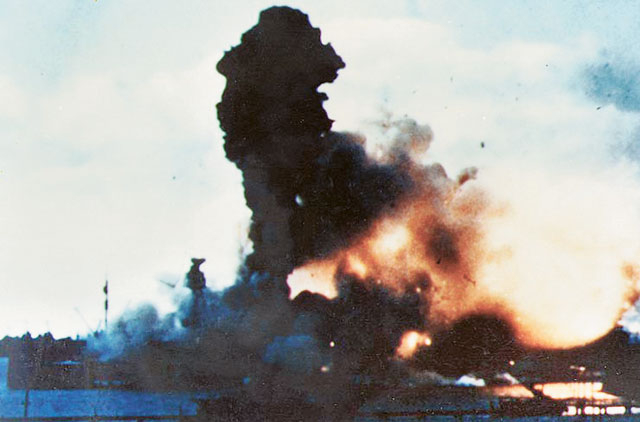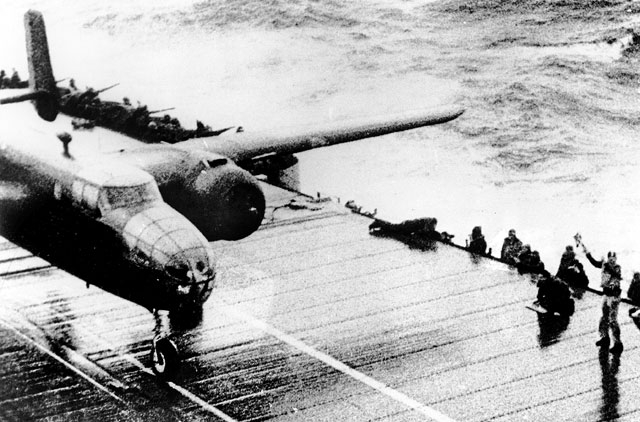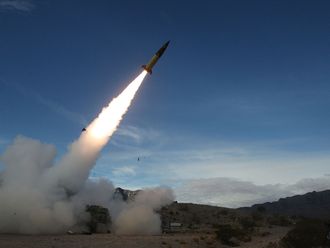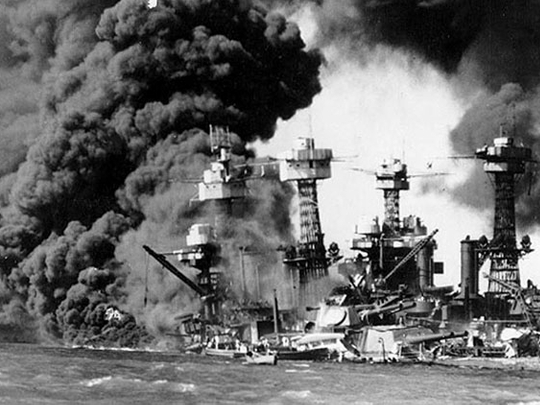
Honolulu: Lee Soucy decided five years ago that when he died he wanted to join his shipmates killed in the attack on Pearl Harbor. Soucy lived to be 90, passing away just last year.
On Tuesday, seven decades after dozens of fellow sailors were killed when the USS Utah sank on December 7, 1941, a Navy diver took a small urn containing his ashes and put it in a porthole of the ship.
The ceremony is one of five memorials being held this week for servicemen who lived through the assault and want their remains placed in Pearl Harbor out of pride and affinity for those they left behind.
"They want to return and be with the shipmates that they lost during the attack," said Jim Taylor, a retired sailor who coordinates the ceremonies.
The memorials are happening the same week the country observes the 70th anniversary of the Japanese aerial bombing that killed 2,390 Americans and brought the United States into Second World War.
A larger ceremony to remember all those who perished will be held on Wednesday just before 8am Hawaii time - the same moment the devastating attack began.
Most of the 12 ships that sank or were beached that day were removed from the harbor, their metal hulls salvaged for scrap.
Just the Utah and the USS Arizona still lie in the dark blue waters. Only survivors of those vessels may return in death to their ships.
The cremated remains of Vernon Olsen, who served aboard the Arizona, will be interred on his ship during a sunset ceremony Wednesday. The ashes of three other survivors are being scattered in the harbour.
Soucy, the youngest of seven children, joined the Navy out of high school so he wouldn't burden his parents.
In 1941, he was a pharmacist mate, trained to care for the sick and wounded. He had just finished breakfast that Sunday morning when he saw planes dropping bombs on airplane hangars.
He rushed to his battle station after feeling the Utah lurch, but soon heard the call to abandon ship as the vessel began sinking. He swam to shore, where he made a makeshift first aid centre to help the wounded and dying.
He worked straight through for two days. The Utah lost nearly 60 men on December 7, and about 50 are still entombed in the battleship. Today, the rusting hull of the Utah sits on its side next to Ford Island, not far from where it sank 70 years ago.
Soucy's daughter, Margaret, said her parents had initially planned to have their ashes interred together at their church in Plainview, Texas. But her father changed his mind after visiting Pearl Harbor for the 65th anniversary in 2006.
"He announced that he wanted to be interred on the Utah. And my mother looked a little hurt and perplexed. And I said, 'Don't worry Daddy, I'll take that part of your ashes that was your mouth and I'll have those interred on the Utah. And you can then tell those that have preceded you, including those that were entombed, what's been going on in the world,'" Margaret Soucy recalled saying with a laugh.
"'And the rest of your remains we will put with mother in the church gardens at St. Mark's.' And then my sister spoke up and said, 'Yes, then mother can finally rest in peace,'" she said.
The family had long kidded Soucy for being talkative -they called him "Mighty Mouth" - so Margaret Soucy said her father laughed and agreed. "He just thought that was hilarious," she said. "So that is what we are doing. We're taking only a portion of his ashes. It's going to be a small urn," she said.
Soucy's three children, several grandchildren and great-grandchildren - 11 family members altogether - attended the sunset ceremony on Tuesday. His wife died earlier this year. Amid overcast skies, a Navy diver took the urn, protected by a mesh bag, and held it above water while swimming toward the Utah.
The diver, who was accompanied by three supporting divers, went underwater to the porthole once reaching the ship. An urn carrying the ashes of Vernon Olsen, who was among the 334 on the Arizona to survive the attack, will be interred in a gun turret on the Arizona on Wednesday.
Most of the battleship's 1,177 sailors and Marines who died on December 7 are still entombed on the ship. Five months after Pearl Harbor, Olsen was on the USS Lexington aircraft carrier when it sank during the Battle of the Coral Sea.
"I used to tell him he had nine lives. He was really lucky," said his widow, Jo Ann Olsen. He passed away in April at the age of 91 after a bout of pneumonia. Pearl Harbor interment and ash scattering ceremonies began in the late 1980s, and started growing in number as more survivors heard about them.
Taylor has helped 265 survivors return to Pearl Harbor. The vast majority have had their ashes scattered. He's arranged for the remains of about 20 Arizona survivors to be placed in the Arizona and about a dozen to be put in the Utah.
"These guys are heroes, OK. Fact is, in my opinion, anybody that's ever served in the military and wore the uniform are heroes. That's why you and I can breathe today in a free country. So I just appreciate what they did," he said.


